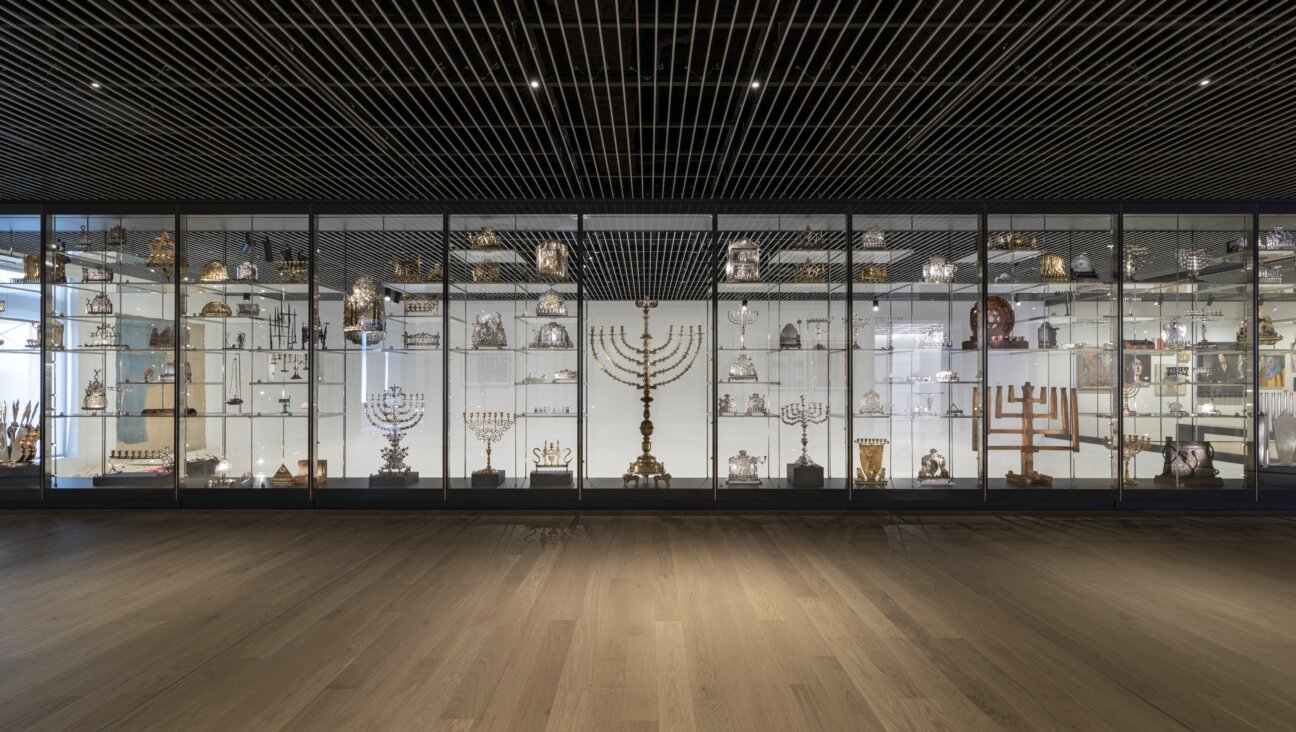How J.J. Tiziou Is Taking Over the National Museum

Image by Dan Friedman
I nearly stepped on the tall, bearded man laying out pairs of big red headshots on the floor of a hallway in the offices of the National Museum of American Jewish History in Philadelphia.
It was J.J. Tiziou — who you might know best from the massive photographic installation of “How Philly Moves” between the parking structures at Philadelphia International Airport, but who, since March, has been the OPEN for Interpretation artist-in-residence at the museum.

A Mounting Sense of Community: J.J. Tiziou hangs his photographs of staff and volunteers. Image by dan friedman
He was mounting a whole batch of staff photos to the wall as an adjunct to the proper installation of Faces of Migration, an exhibit that he’d put together downstairs and that had opened a couple of days earlier on June 21.
As part of his residency he was concentrating on aspects of “community” and this one had involved taking around 7000 photos of around 400 people. His subjects were staff and volunteers at local institutions dealing mainly with populations that were first, second or third generation immigrants.
He had, as he put it: “Taken the pictures so he might as well print them. Got the prints so he might as well hang them.” The photographs for the exhibition were 7”x5” prints, uncaptioned, mounted in a grid eight photos high and 44 long (that’s 352 images) to demonstrate, perhaps, that one of the signs of migration perhaps was a diverse and lively group of Philadelphians.
The staff, volunteers and docent photos in the office hallway were printed out on a larger 18”x12” format and brought together a community of people on the wall who, because of their different relationship to the museum might never or only rarely come together in person.

Labor: This photograph throws the NMAJH wall display on the Triangle Shirt Waist Fire into new relief. Image by J.J. Tiziou
As one of his projects, Tiziou has made a number of interventions in the core exhibitions, placing his photographs in mind-opening places. One, a photo of a protesting tomato picker with Coalition of Immokalee Workers on the lawn of a white house in Montgomery, Alabama, is placed in the part of the core exhibit that deals with labor and, specifically, the Triangle Shirt Waist Factory tragedy to throw a contemporary light on a historical immigrant labor scandal.
Tiziou isn’t Jewish and he has turned that into an asset, talking to staff and visitors without making them feel judged. Of course many of the staff are not Jewish either, and he brings that out in the installation which with he has transformed the external Market Street wall of the museum.

An Invitation To Enter: J.J. Tiziou has opened up the external wall to display. Image by dan friedman
“A Confession and An Invitation” juxtaposes Tiziou’s large scale two page handwritten introduction to the museum with two rows of large scale 18”x12” photographs of the staff accompanied by their “confessions.” These are quite tame and quite charming, “I’m not Jewish,” “I’m British and quite humorous,” and “I was brought up in Brazil and I still sometimes dream in Portuguese.” Most tellingly, though, in his letter he quotes Kristen who runs the museum store, “You go to an aquarium to learn about fish, you don’t only go to an aquarium if you are a fish.”
Well, quite! So whether you are a fish or not, Tiziou’s work will be floating around NMAJH all summer.
NMAJH is situated at 101 S Independence Mall E, Philadelphia, PA, and is open from 10am to 5pm Tuesday to Sunday.

















